

Salt Lake Area Cemetery Costs
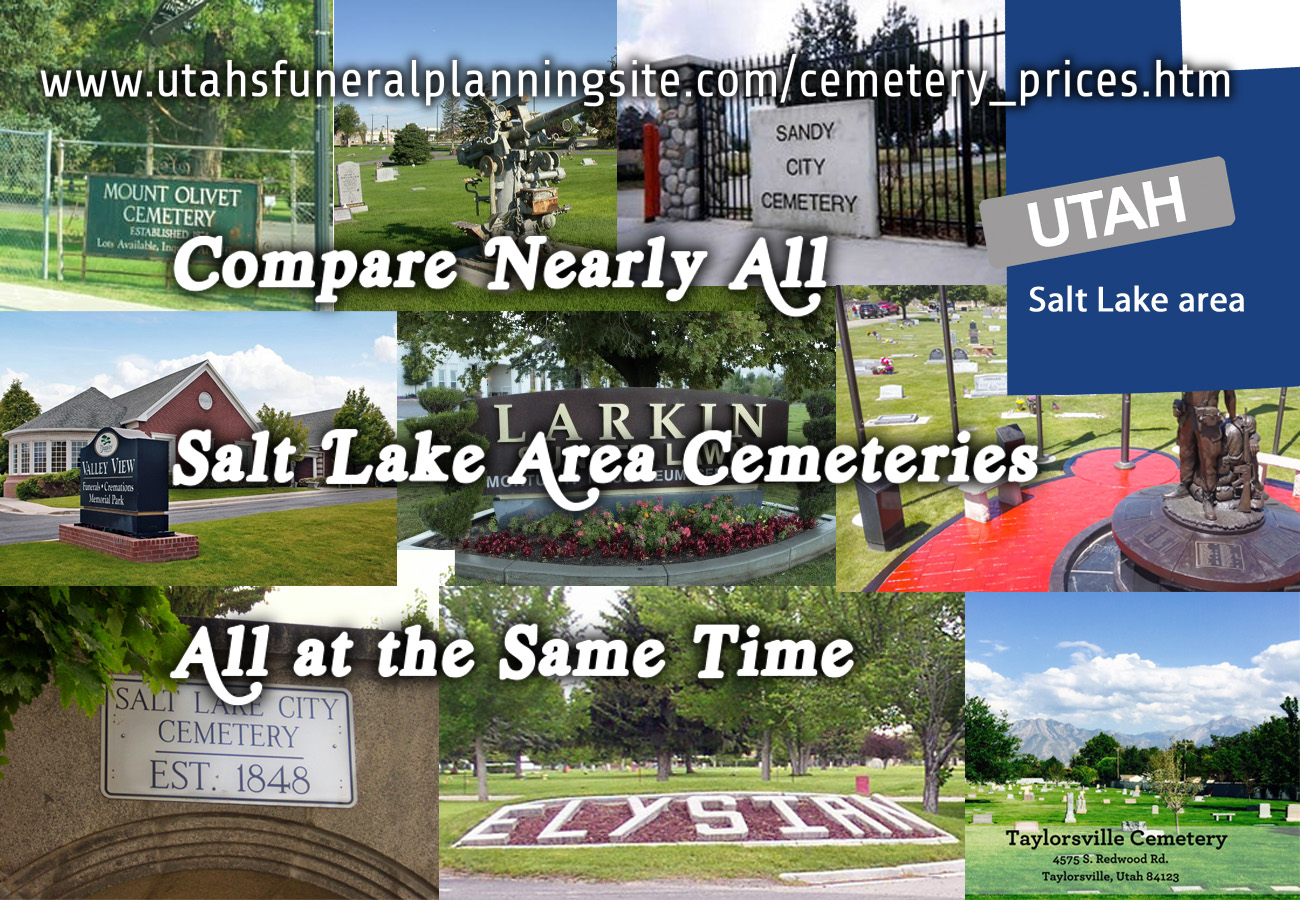
The following table can help you plan for what you still need to do:

I help you reasonably estimate what future cemetery costs will be and also recommend cemeteries that charge less for the same arrangements as the larger, high profile companies. The exception(s) would be if the cemetery you have chosen has family members or close friends you wish to be near or the cemetery is running out of space. In these cases, you probably don't want to defer paying the cemetery until later (as with using an insurance plan).

Double Depth ("Stacked") Burials
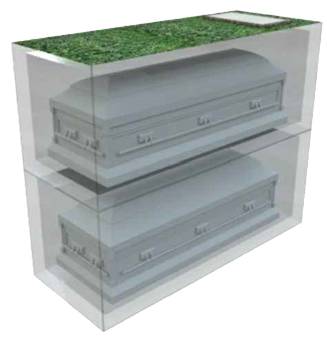
Most cemeteries and memorial parks allow the option of burying two persons in one grave space, normally known as a double depth interment. It is one on top of the other, each with its own casket and vault. They generally charge extra for what is known as a "second interment right." A second interment right is nothing but an additional cost, as you are not buying additional ground space. Typically second interment rights cost half of what a regular, second burial space would cost. For example, if a single burial space for one adult costs $1,400.00, a second interment right in that space might cost $700.00. These rights can be purchased with the space at the outset for one total price, or they can be purchased later in a burial space you already own. Double depth burial arrangements will normally cost you less money than two burial spaces, and it helps the cemetery conserve burial ground. The size of the marker or headstone on the ground is a bit more limited, because the grave width is typically around 40 inches. When you have two side-by-side burial spaces, on the other hand, you can have a much wider marker by putting it midway between the two spaces.
Headstones and markers are not required for a burial or funeral to take place. They can be purchased much later, or even never at all. Therefore, they are not as thoroughly discussed on this Web site.
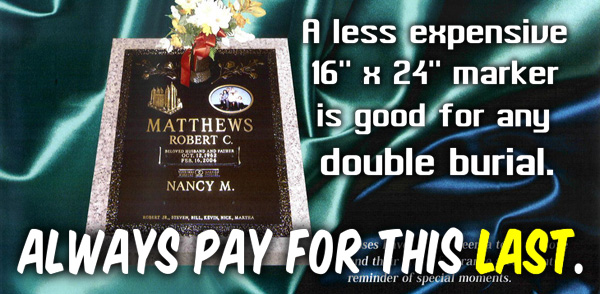
Burial Vaults
 What are called "vaults" today are usually "grave liners" or "outer burial containers." The law is particular concerning how a representative of a cemetery or funeral home can refer to this container.
What are called "vaults" today are usually "grave liners" or "outer burial containers." The law is particular concerning how a representative of a cemetery or funeral home can refer to this container.
A "vault" must be a sealed container, and what most burials utilize is not a sealed container or vault but simply a concrete or cement box.

Outer burial containers, normally made of concrete or cement, are required by almost all cemeteries today so they can compact the soil after the burial. Without a concrete outer burial container, any compacting could crush the casket. The compacting is done to disallow the ground from sinking or settling over time.
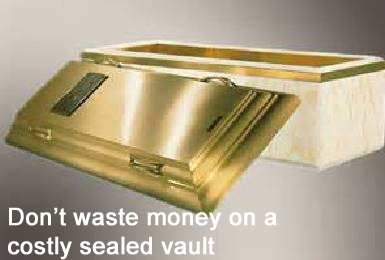
You should really only purchase the minimum container required by the cemetery. As with caskets, there is nothing about the construction of a vault that will slow down decomposition of the body or protect the body. All an expensive vault will do is protect the casket. But the body will decompose no matter what. Only an Egyptian-style mummification will preserve a body.


So if a funeral home salesperson insists on a sealed vault that costs more money, you can say you don't need or want it. Some vaults are reinforced with various materials such as hard plastics that prevent them from cracking. Again, this will help preserve the casket but not the body. So why would you want to pay $2,500.00 for a vault when a $900.00 concrete box will do?
How to Purchase Burial Vaults
Every burial vault, grave liner or box, has two associated costs: (1) the physical vault itself, and (2) the cost of the "setting" or putting it in the ground. The two can be purchased together at many cemeteries and then guaranteed at one price, regardless of future price increases. The vault "setting" fee is a separate and different charge than the "opening and closing of the grave" (which includes digging with a backhoe). Setting merely means lifting the vault with a machine, lowering it into the ground, and placing the lid on it after the casket has been lowered into it. Some cemeteries, such as those owned by conglomerates, will allow you to pay for the vault, the vault setting, and the opening and closing of the grave all as one package in advance.
Some cemeteries or memorial parks often will charge a much lower price for their physical vault than funeral homes can charge, and then charge an exorbitant amount for the setting of the vault. This means that if you buy a vault from a funeral home or funeral provider, and then add the vault setting fee, you will pay more than if you buy the vault and the setting from the cemetery. They do this to prevent burial space owners from buying vaults from anyone but them.
Cremated remains, or "cremains," can be buried in a cremation space--which is smaller than normal and costs less than a full adult burial space. Or two cremated remains, along with the required cremains vaults, can be buried per adult burial space. Up to four can be buried in double-depth arrangements. Some mistakenly believe that large numbers of cremated remains can be buried in a single space. Cemeteries generally have a limit of (2), as many cremains vaults as will fit in the space. And they will not bury cremated remains without a vault (outer container).













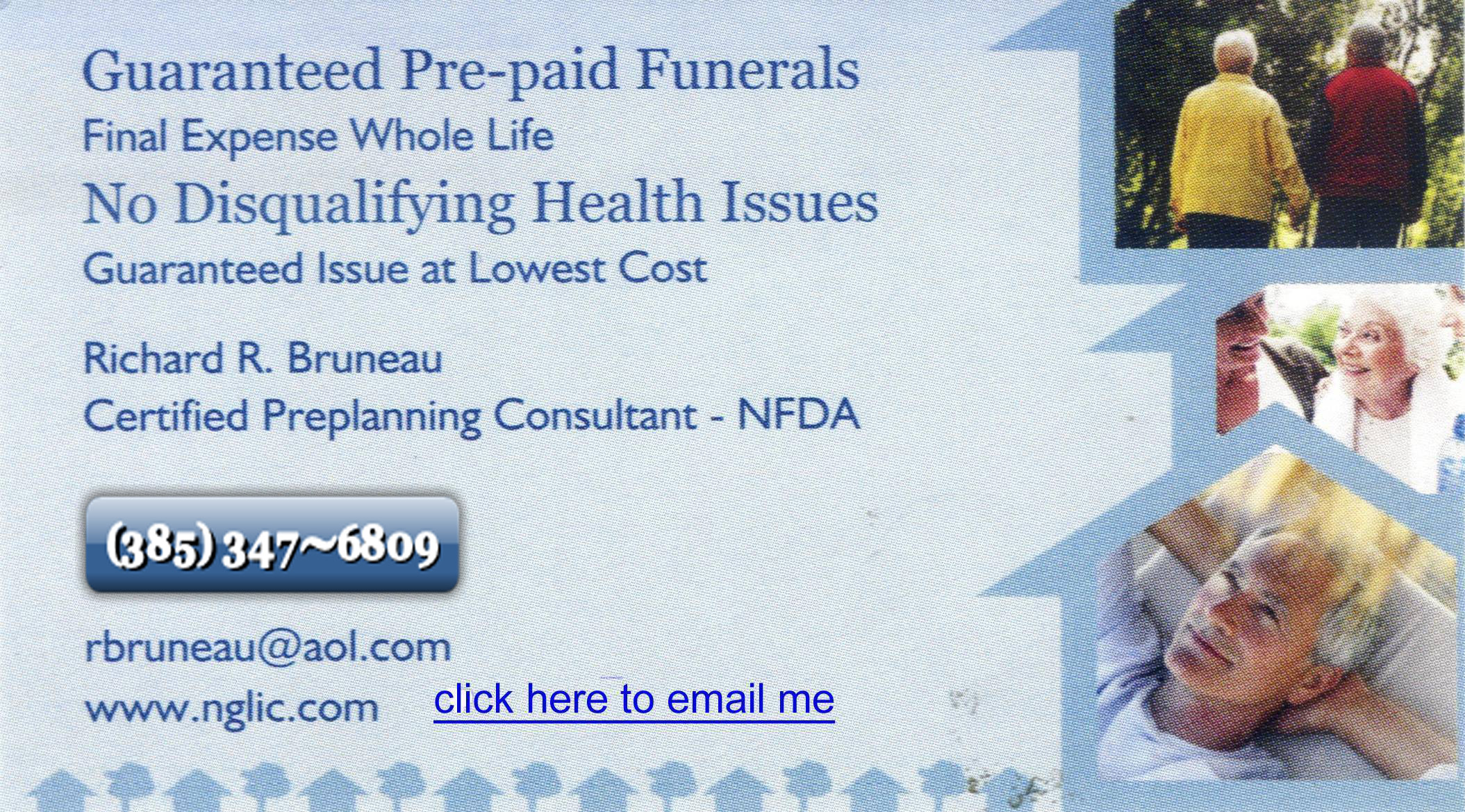









 What are called "vaults" today are usually "grave liners" or "outer burial containers." The law is particular concerning how a representative of a cemetery or funeral home can refer to this container.
What are called "vaults" today are usually "grave liners" or "outer burial containers." The law is particular concerning how a representative of a cemetery or funeral home can refer to this container. 



















